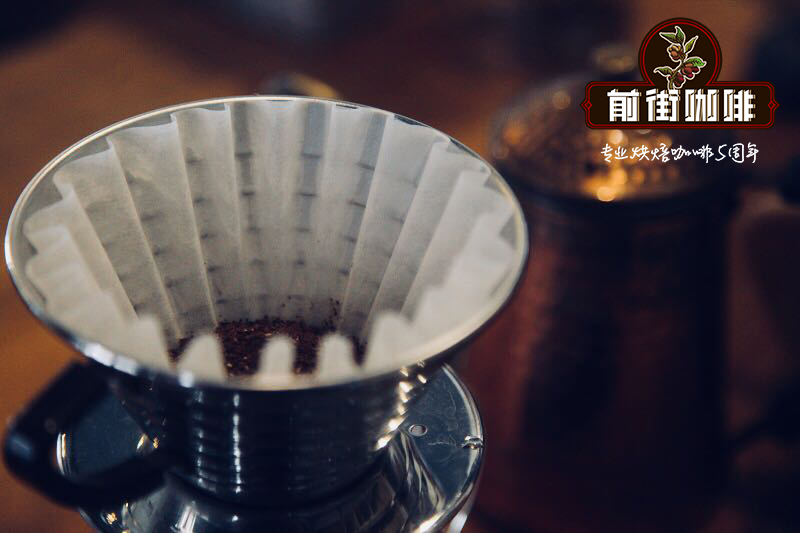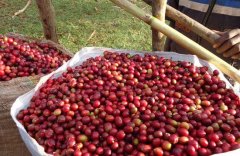Costa Rican Coffee Costa Rica Honey Coffee Costa Rica Ponte processing Plant

Professional coffee knowledge exchange more coffee bean information please follow the coffee workshop (Wechat official account cafe_style)
Costa Rican coffee has a history of more than 200 years. It is not only an important basis for the country's economy and people's livelihood, but also an indispensable role in the global coffee history. In the past decade, it has become popular all over the world as a micro-processing farm. In this small Central American country, because of its special geographical environment, it has created a wide variety of boutique coffee with different flavors. The farmers living here not only have perfect working environment and production conditions, democratic and peaceful national conditions, strict labor laws, and appropriate medical and health care system, but also can imagine why this is the first country with no military in Central America, and it is also the seat of the United Nations University for Peace.
Over the past decade, the Costa Rican processing plant can be said to be a hundred schools of thought contend, a variety of new treatments are too many to give, Ponte processing plant is also one of the early pioneers of honey treatment.
Some people may think that this is a super-large industrial processing plant, but it is actually a micro-processing plant made up of six families, led by Rudolf Rodolfo Rivera, and other neighbors work together to produce high-quality raw beans year after year.
After honey treatment developed in Costa Rica, various processing plants competed to introduce raw beans with different treatment methods. White honey treatment is a honey processing method with lower fermentation, compared with other colors (yellow, red, black). In the process of treatment, there are more times of stirring, less flesh retention, put on the scaffolding after drying, will be assembled into pieces of raw beans mixed with a small amount of bean shell (sheep skin) In order to reduce the stickiness and moisture of the berry, so that the sheller can smoothly remove the pulp layer and shell remaining in the outer layer.
The Ponte plant is mainly divided into two main parts, the first is the washing equipment that has been built for more than 11 years, the second is the dry treatment equipment built three years ago, which began to produce honey-treated coffee raw beans, and last year another expert, Alejandro, joined the team of the treatment plant, mainly responsible for the details of the dry treatment process to improve the quality of honey-treated raw beans.
Other members include Alicia, Marjorie, Jenny and Dania, etc., all neighbors of Rodolfo Rivera, as well as his niece. During the harvest season and post-processing, they are the backbone of the processing field, hand-picked and screened as the last line of defense for quality control. On average, they have to hand-pick raw coffee beans for 8 hours a day. It is hard to imagine their perseverance and hard work, but such a rigorous production process. In order to create a stable year after year of high-quality coffee raw beans.
What is amazing about the batches of Ponte's honey treatment is not only the firmness and sweetness of the honey treatment, but also the charming flavor of orange blossom water at low temperature, which is definitely the best work of the treatment plant in the past.
Important Notice :
前街咖啡 FrontStreet Coffee has moved to new addredd:
FrontStreet Coffee Address: 315,Donghua East Road,GuangZhou
Tel:020 38364473
- Prev

Taiwan coffee introduction of Wujia Manor Coffee in Alishan, Taiwan.
Professional coffee knowledge exchange more coffee bean information please follow the coffee workshop (Wechat official account cafe_style) after drinking the first sip of Taiwan coffee, the tip of the tongue slowly changed from bitter to sweet, the sweet, mellow, rich taste lingered in the mouth for a long time, when the temperature dropped slightly to 85 ℃, the unforgettable taste came back to the heart again, perhaps with a little almonds
- Next

Difference of brewing flavor of red bourbon and yellow bourbon coffee beans in Arabica coffee bean producing area of Brazil
Professional coffee knowledge exchange more coffee bean information please follow the coffee workshop (Wechat official account cafe_style) Brazil has seven states producing coffee, a total of 14 coffee producing areas Sao Paulo (Mogiana, Centro-Oeste) Parana (Norte Pionerio do Paran) Bahia (Planaltoda Bahia, Cerrado da Bahia, Atlantic)
Related
- Does Rose Summer choose Blue, Green or Red? Detailed explanation of Rose Summer Coffee plots and Classification in Panamanian Jade Manor
- What is the difference between the origin, producing area, processing plant, cooperative and manor of coffee beans?
- How fine does the espresso powder fit? how to grind the espresso?
- Sca coffee roasting degree color card coffee roasting degree 8 roasting color values what do you mean?
- The practice of lattes: how to make lattes at home
- Introduction to Indonesian Fine Coffee beans-- Java Coffee producing area of Indonesian Arabica Coffee
- How much will the flavor of light and medium roasted rose summer be expressed? What baking level is rose summer suitable for?
- Introduction to the characteristics of washing, sun-drying or wet-planing coffee commonly used in Mantenin, Indonesia
- Price characteristics of Arabica Coffee Bean Starbucks introduction to Manning Coffee Bean Taste producing area Variety Manor
- What is the authentic Yega flavor? What are the flavor characteristics of the really excellent Yejasuffi coffee beans?

